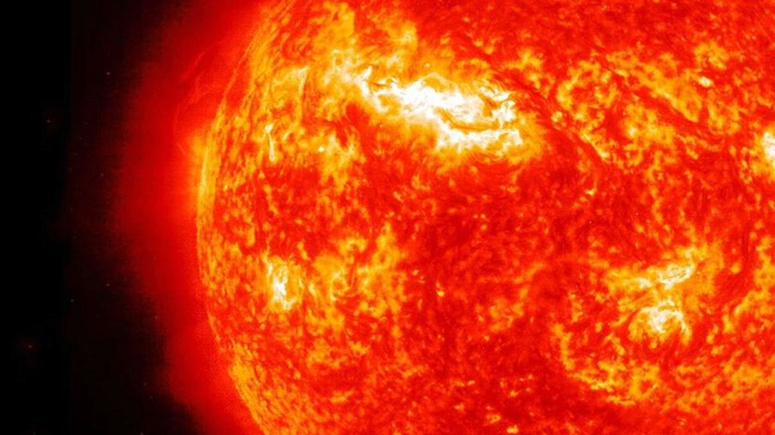?Sun: why is its atmosphere significantly warmer than its surface

The temperature on the surface of the sun is around 6,000°C, while its atmosphere reaches a million degrees! We would tend to imagine, as on Earth, that we lose heat as we rise into the atmosphere. How to explain this paradox?
Many scientists are studying this question. If the answer is not yet clear, several hypotheses exist on the origin of the energy which heats the atmosphere of the Sun, and this could have to do with the magnetic field of our star. [An article from The Conversation written by Hannah Schunker, Lecturer of Physics, University of Newcastle and David Pontin Associate Professor of Physics, University of Newcastle].
The temperature of the Sun
Heat is created at the very center of the Sun, at its core, where the temperature reaches 27 million degrees Celsius. And like when you move away from a campfire, the temperature decreases as you move away from the core.
The surface temperature of the Sun is around 6,000°C, which means it is much colder than the core. Additionally, cooling continues for a short distance above the surface.
But higher up, in the atmosphere, the temperature suddenly rises to more than a million degrees! So there must be something heating the Sun's atmosphere. But it is difficult to know what it is.

The Sun's magnetic field
The most popular hypothesis among experts is that our star's magnetic field brings energy from the Sun's interior up through its surface and into its atmosphere.
Like the Earth, the Sun has a magnetic field. Let's imagine the magnetic field as invisible lines connecting the north and south poles of a star or planet.
We can't see magnetic fields, but we know they exist because we have objects that react to them. For example, a compass needle on Earth will always point toward the North Pole because it aligns with Earth's magnetic field.

Here you can see how Earth's magnetic field extends out into space and loops back. The red end is the north magnetic pole and the white end is the south pole. Shutterstock
The Sun has a North Pole and a South Pole, but its magnetic field behaves differently from that of the Earth and appears much messier. On the surface of the Sun, the magnetic field lines look like many loops rising from the surface into the atmosphere, and these loops are constantly changing.
If the loops touch, they can cause sudden bursts of huge amounts of energy that heat the atmosphere. We also know that waves travel along magnetic field lines and provide energy. Could they be responsible for warming the atmosphere?
Is it a combination of waves and explosions, or something else entirely? Being able to measure the Sun's magnetic field would really help us understand what's going on.

This is what the Sun's magnetic field lines might look like if we could see them rising from its surface. NASA
Measure the magnetic field
Magnetic fields are invisible, but we can measure them because they slightly modify the light coming from the Sun. Its surface is very shiny, so it's easy to see changes in its light coming from it and measure the magnetic field there.
But the Sun's atmosphere is so hot that light is no longer visible. Instead, it produces X-rays, a type of light that we cannot see. Even if we use special X-ray telescopes, the X-rays coming from the Sun's atmosphere are too weak for us to determine what the magnetic field in the atmosphere looks like.
The good news is that a probe, NASA's Parker Solar Probe, is currently orbiting close to the Sun (but not too close) and is crossing the magnetic field to measure it. We should receive a lot of exciting information over the coming years.
These measurements of the magnetic field will allow us to better understand what makes the atmosphere of the Sun and other stars much hotter than their surfaces.

NASA's Solar Parker Probe is about the size of a car. NASA
Source: websites

